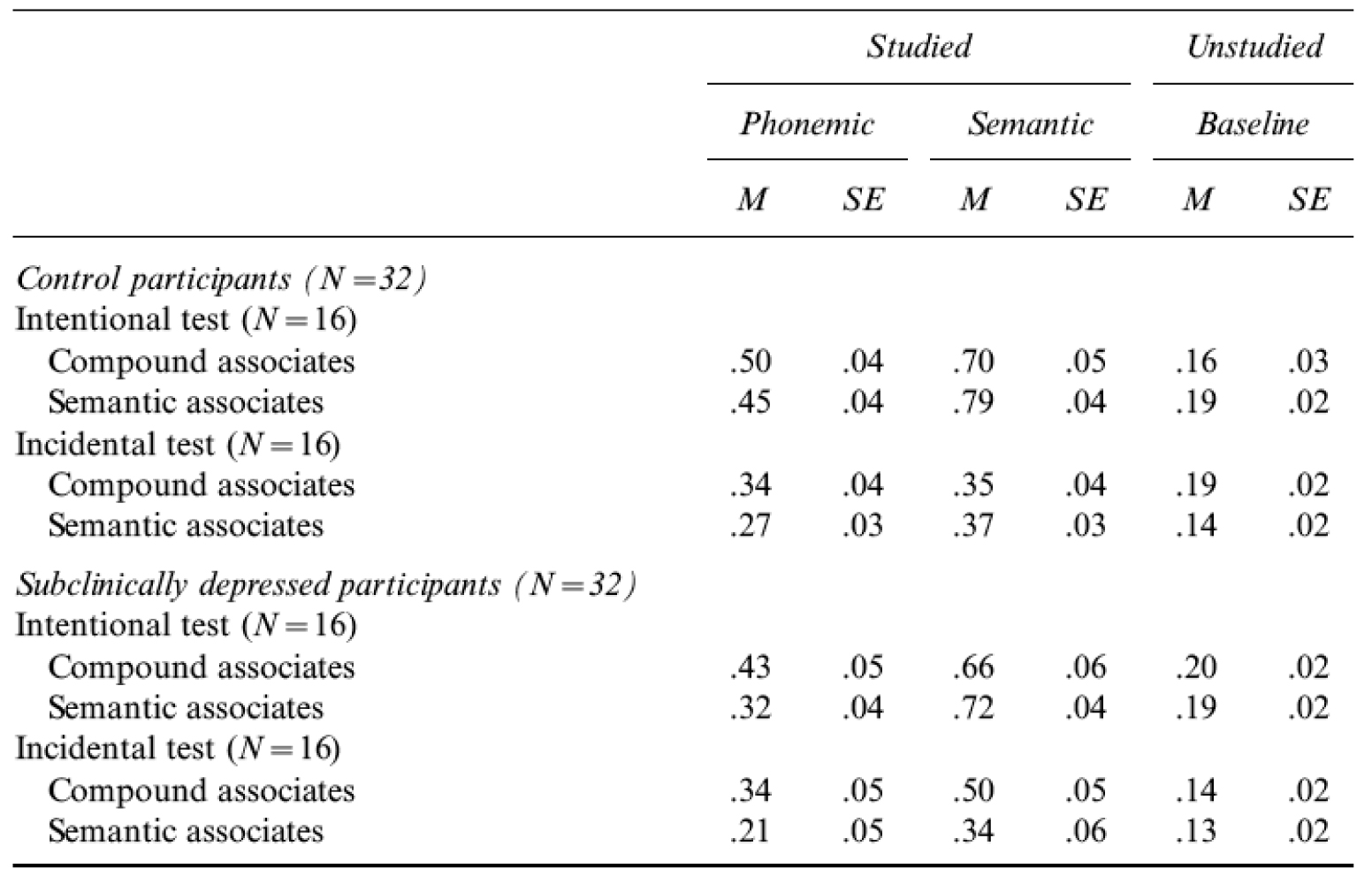Conceptual implicit memory in dysphoric mood
Contamination in conceptual implicit memory
It is known that depression adversely affects memory. However, when tests tap memory that is not deliberately retrieved (implicit memory) differences between individuals with depression and controls are not so evident. More precisly, when implicit memory is tapped with a perceptual implicit test, as when for example perceptual identification is facilitated by prior presentation of the object to be identified, no difference is observed. However, when implicit memory is tapped with a conceptual implicit test as, for example, when free associating to a cue, prior presentation of the target facilitates its occurrence as a response. In this case, there is no perceptual overlap between the test cue and the studied target, unlike in a perceptual implicit test. Depressed participants have been found to have poorer implicit memory than normal healthy controls.
We attempted to investigate whether the impairment of conceptual implicit memory could be a consequence of implicit memory tests being contaminated by a voluntary retrieval strategy. In a free association test of implicit memory, contamination occurs when participants deliberately attempt to retrieve the targets studied prior to the test phase. In this case, similar results to those in a test of explicit memory would be observed in the test of implicit memory.
In this study we adopted a method sensitive to the presence of contamination in a test of conceptual implicit memory (Ramponi, Richardson-Klavehn & Gardiner, 2007).
In the study phase of the current work participants saw two types of associate, semantic associates (e.g. boat-ship) and compound associates (e.g. leather-belt). Depth of processing was varied at study and effects of this variation were observed for the dysphoric and control participants completing the explicit version of the word-association task. As expected, dysphoric participants retrieved fewer associates overall in this test (see table below). By contrast, for the controls completing the implicit free-association task, a depth of processing effect was not observed when compound associates were retrieved. The dissociation between the explicit and implicit version of the test for the compound associates, in relation to depth of processing, corroborated the idea that in the two tests a different retrieval strategy was used. We could then argue that the test of conceptual implicit memory was not contaminated by an intentional retrieval strategy.
However, this was not the case for the dysphoric participants. They showed a depth of processing effect in the test of implicit memory when retrieving the targets of compound associates.

These results were interpreted as suggesting that dysphoric participants were more likely to deliberately retrieve studied words in a test of implicit memory. It indicates that the test could have been contaminated. In this case, prior studies of impaired conceptual priming should be now be interpreted with considersable caution. Our results imply that studied words were more available than any other words in the lexcion that might have been more prominent associates. Indeed, it could prove that searching for an association is more effortful for depressed people than relying on retrieving recently studied words.
For a full report see:
Ramponi, C. Nayagam, J.S. and Barnard, P. J. (2009). Conceptual implicit memory in subclinical depression. Cognition and Emotion, 23 (3), 551-568.
DOI: 10.1080/026999308020283
and
Ramponi, C., Richardson-Klavehn, A. & Gardiner, J.M. (2007) Component processes of conceptual priming and associative cued recall: The roles of pre-existing representation and depth of processing, Journal of Experimental Psychology - Learning, Memory and Cognition, 33 (5), 843-862

 MRC Cognition and Brain Sciences Unit
MRC Cognition and Brain Sciences Unit

